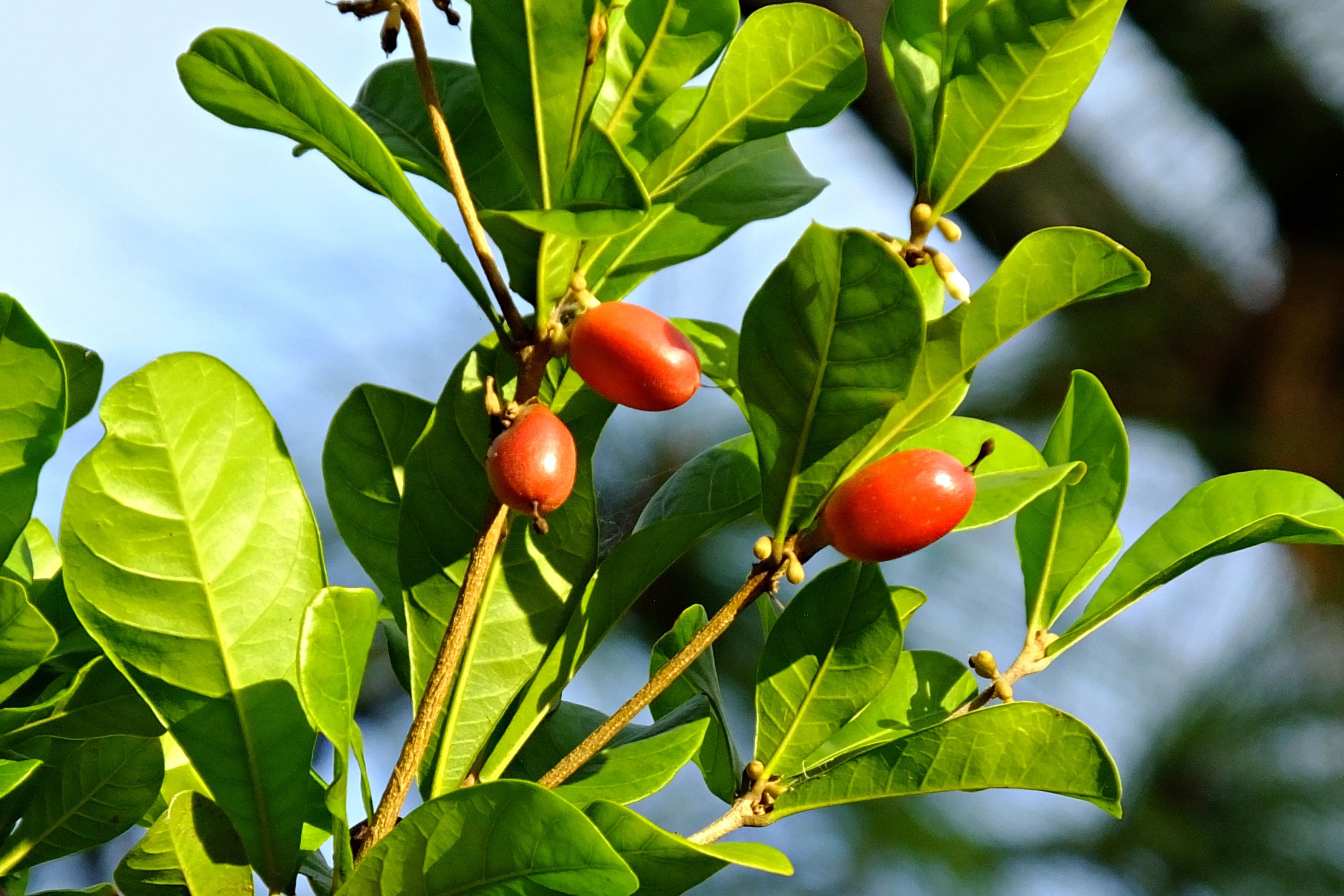Miracle fruit
(Synsepalum dulcificum)

Description
Synsepalum dulcificum is a plant in the Sapotaceae family known for its berry that, when eaten, causes sour foods (such as lemons and limes) subsequently consumed to taste sweet. This effect is due to miraculin. Common names for this species and its berry include miracle fruit, miracle berry, miraculous berry, sweet berry, and in West Africa, where the species originates, agbayun, taami, asaa, and ledidi. The berry itself has a low sugar content and a mildly sweet tang. It contains a glycoprotein molecule, with some trailing carbohydrate chains, called miraculin. When the fleshy part of the fruit is eaten, this molecule binds to the tongue's taste buds, causing sour foods to taste sweet. At neutral pH, miraculin binds and blocks the receptors, but at low pH (resulting from ingestion of sour foods) miraculin binds proteins and becomes able to activate the sweet receptors, resulting in the perception of sweet taste. This effect lasts until the protein is washed away by saliva (up to about 30 minutes). The names miracle fruit and miracle berry are shared by Gymnema sylvestre and Thaumatococcus daniellii, which are two other species used to alter the perceived sweetness of foods. The berry has been used in West Africa since at least the 18th century, when a European explorer, the Chevalier des Marchais, provided an account of its use there. Des Marchais, who was searching West Africa for many different fruits in a 1725 excursion, noticed that local people picked the berry from shrubs and chewed it before meals. In the 1980s in the United States, an attempt was made to commercialize the fruit for its ability to mask non-sweet foods as sweet without a caloric cost, but became compromised when the Food and Drug Administration classified the berry as a food additive and required evidence of safety. For a time in the 1970s, US dieters could purchase a pill form of miraculin. This interest had a revival in food-tasting events at which tasters consume sour and bitter foods, such as lemons, radishes, pickles, hot sauce, and beer, then experience the perceived change to sweetness with miraculin. It is a shrub that grows 1.8–4.5 m (5.9–14.8 ft) in height and has dense foliage. Its leaves are 5–10 cm (2.0–3.9 in) long, 2.0–3.7 cm (0.79–1.46 in) wide, and glabrous below. They are clustered at the ends of the branchlets. The flowers are white. It carries red, 2 cm (0.79 in) long fruits. Each fruit contains one seed.
Taxonomic tree:







